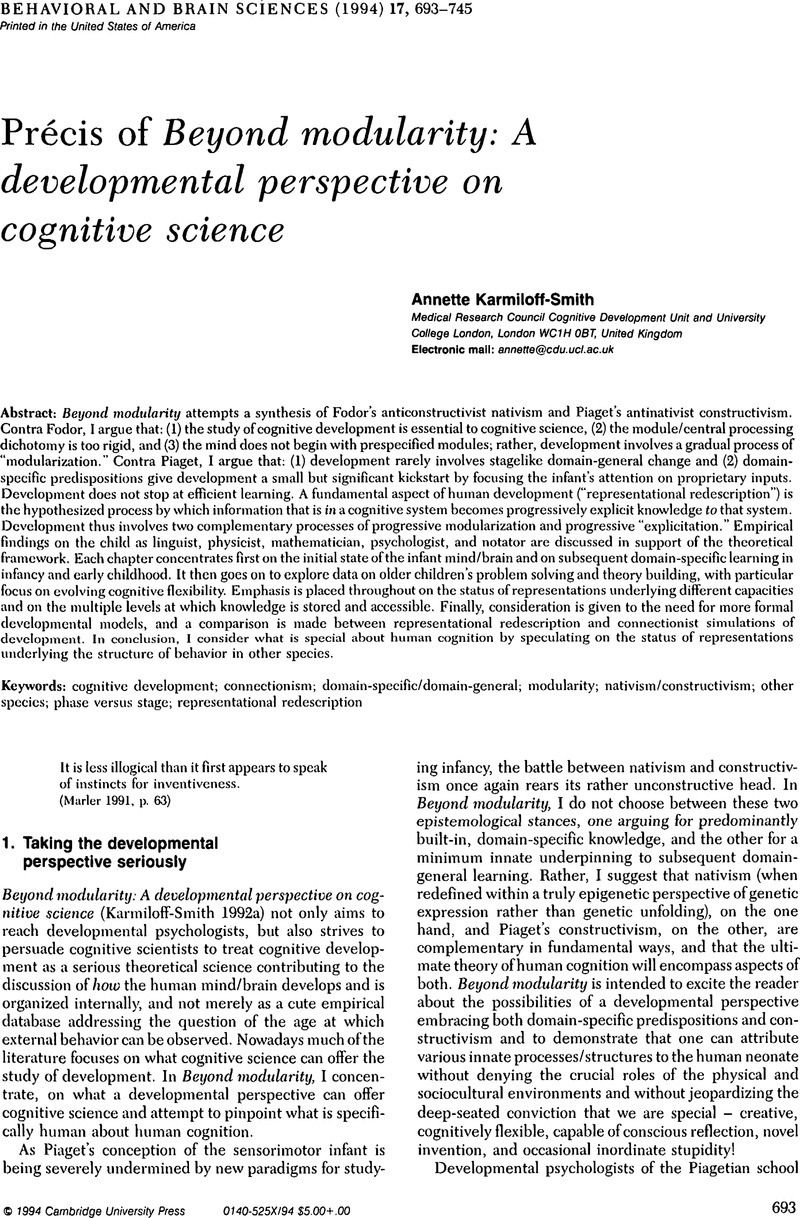Crossref Citations
This article has been cited by the following publications. This list is generated based on data provided by Crossref.
Michel, George F.
1998.
A lateral bias in the neuropsychological functioning of human infants.
Developmental Neuropsychology,
Vol. 14,
Issue. 4,
p.
445.
Samuels, Richard
Stich, Stephen
and
Tremoulet, Patrice D.
1999.
Cognition, Agency and Rationality.
p.
21.
Bates, Elizabeth
Reilly, Judy
Wulfeck, Beverly
Dronkers, Nina
Opie, Meiti
Fenson, Judi
Kriz, Sarah
Jeffries, Rita
Miller, LaRae
and
Herbst, Kathryn
2001.
Differential Effects of Unilateral Lesions on Language Production in Children and Adults.
Brain and Language,
Vol. 79,
Issue. 2,
p.
223.
David Zelazo, Philip
Jacques, Sophie
Burack, Jacob A.
and
Frye, Douglas
2002.
The relation between theory of mind and rule use: evidence from persons with autism‐spectrum disorders.
Infant and Child Development,
Vol. 11,
Issue. 2,
p.
171.
Samuels, Richard
2002.
Nativism in Cognitive Science.
Mind & Language,
Vol. 17,
Issue. 3,
p.
233.
Gelman, Susan A.
2005.
The Innate Mind.
p.
198.
2005.
The Innate Mind.
p.
v.
Johnson, Susan C.
2005.
The Innate Mind.
p.
254.
2005.
The Innate Mind.
p.
xi.
Povinelli, Daniel J.
Prince, Christopher G.
and
Preuss, Todd M.
2005.
The Innate Mind.
p.
239.
Greene, Joshua
2005.
The Innate Mind.
p.
338.
Simpson, Tom
2005.
The Innate Mind.
p.
122.
Marcus, Gary F.
2005.
The Innate Mind.
p.
23.
Crain, Stephen
Gualmini, Andrea
and
Pietroski, Paul
2005.
The Innate Mind.
p.
175.
Simpson, Tom
Carruthers, Peter
Laurence, Stephen
and
Stich, Stephen
2005.
The Innate Mind.
p.
3.
Duntley, Joshua D.
and
Buss, David M.
2005.
The Innate Mind.
p.
291.
Scholl, Brian J.
2005.
The Innate Mind.
p.
34.
Laurence, Stephen
and
Margolis, Eric
2005.
The Innate Mind.
p.
216.
Baker, Mark C.
2005.
The Innate Mind.
p.
156.
Sperber, Dan
2005.
The Innate Mind.
p.
53.



